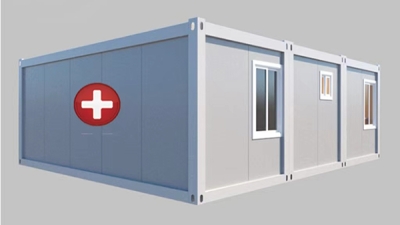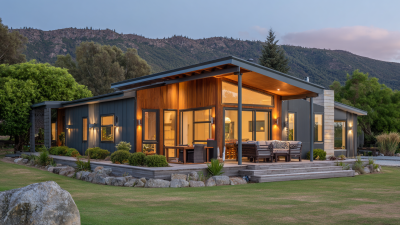Ultimate Guide to Building Your Dream Container Van House in the Philippines
Table of Contents
- Choosing the Right Container Van Design for Your Dream Home
- Key Considerations for Sourcing Quality Container Vans in the Philippines
- Essential Permits and Regulations for Building Container Van Houses
- Creative Interior Design Tips for Maximizing Space in Your Container Home
- Sustainable Living: Energy Efficiency Solutions for Container Van Houses
- Budgeting and Financing Your Container Van Home Project in the Philippines
- Exploring the Future of Healthcare Infrastructure: Innovative Solutions in Emergency Hospital Containers and Modular Spaces
- FAQS
- Conclusion
- Related Posts
As more and more people in the Philippines start looking for affordable and eco-friendly housing options, the idea of Container Van Houses is really catching on. I mean, if you check out recent data—from a report by Statista—things are looking pretty promising. The market for modular and prefab homes across Southeast Asia is actually expected to grow around 14% every year. That just shows how folks are shifting towards newer, innovative ways to build homes. Now, China Construction Integrated Building Co., Ltd. has been around since 2009 and is actually leading the charge here. They offer everything from research and design to manufacturing and construction of these prefab houses. With a hefty capital of 300 million yuan and eight different production facilities, they’re definitely ready to help more homeowners turn their dream container van houses into reality. And what’s great is, they’re finding a good balance between quality and affordability in a market that’s really on the rise.
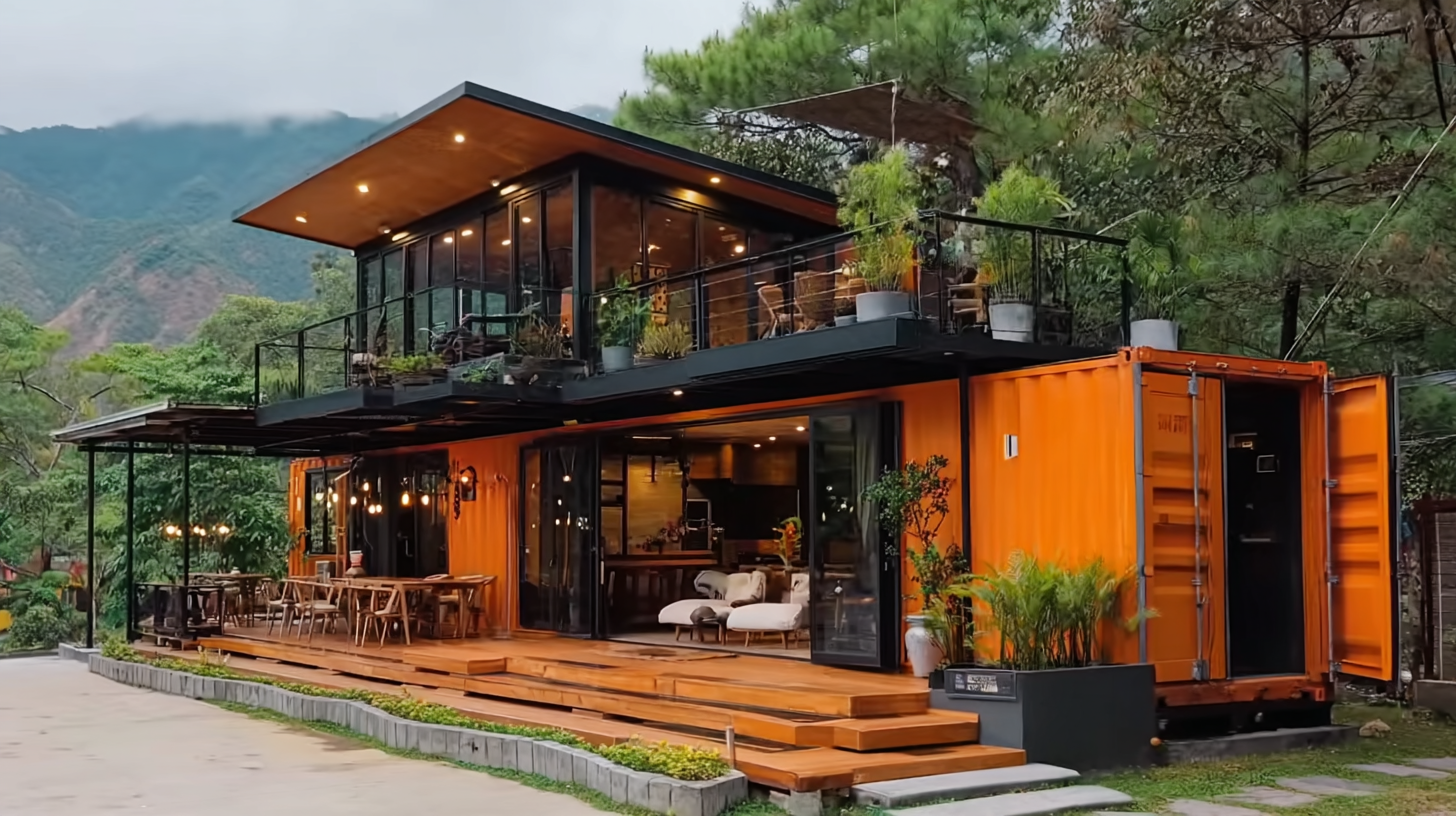
Choosing the Right Container Van Design for Your Dream Home
If you're dreaming of a container van house in the Philippines, picking the right design is pretty important. You wanna find that sweet spot between practicality and your personal style, ya know? I recently came across a report by Grand View Research that says the global market for prefab buildings is expected to hit about $210 billion by 2027 — crazy, right? It really shows how more people are getting into innovative, eco-friendly homes. 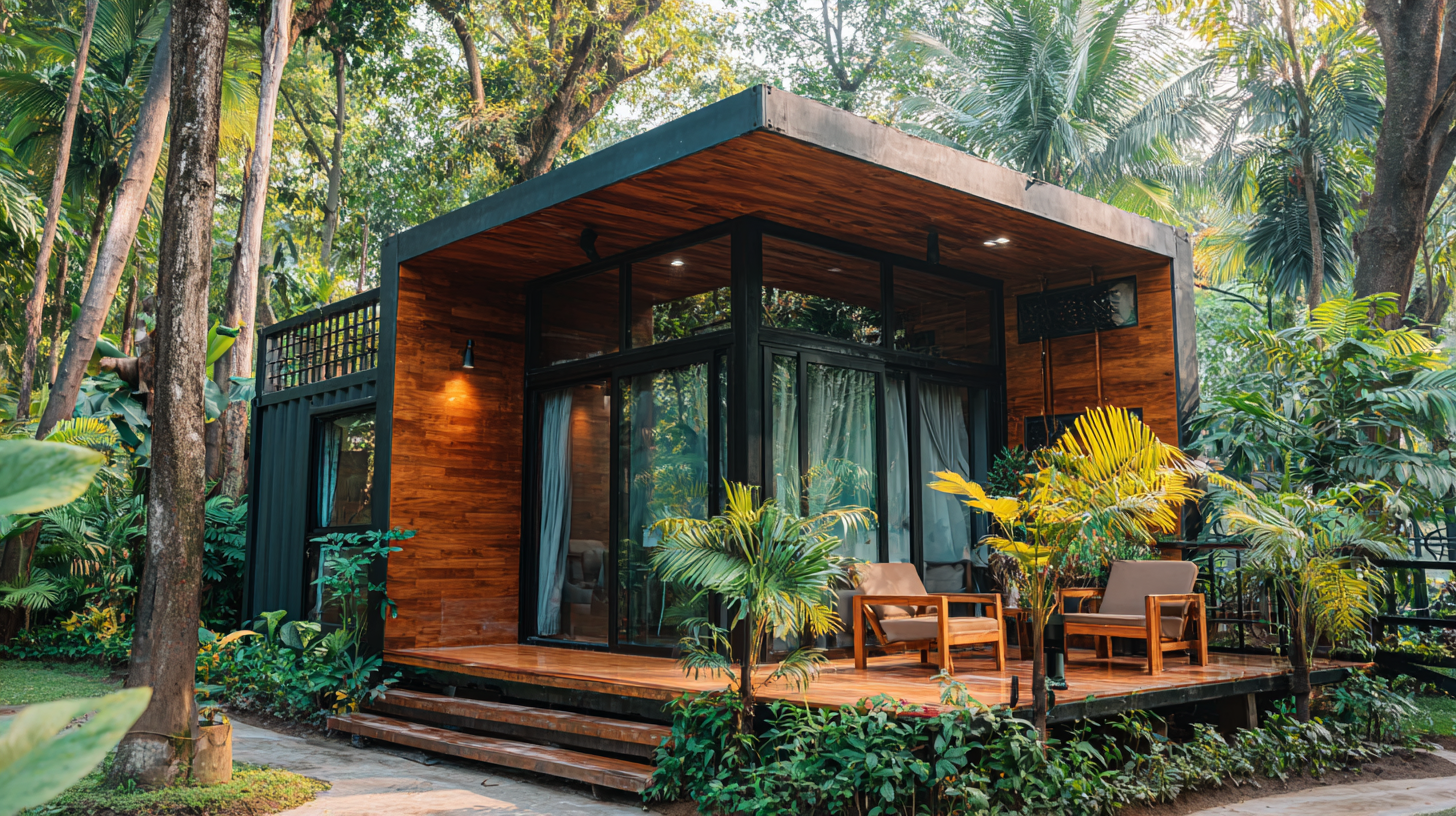 Container van houses, in particular, are gaining popularity because they make smart use of space and are super sustainable.
Container van houses, in particular, are gaining popularity because they make smart use of space and are super sustainable.
There's also a company called China Construction Integrated Building Co., Ltd. that’s been around for over ten years, specializing in all things prefabricated. They’ve got eight production bases and offer everything from research and design to manufacturing and delivery. So, whatever vibe you’re after — sleek and modern or cozy and family-friendly — they've got options to match your vision. They're all about quality and efficiency, which really matters when you're building your dream home. With their expertise and top-notch materials, they’re definitely leading the way in the prefab housing scene. So, if you’re thinking about making that container van home in the Philippines happen, these guys are totally ready to help you out!
Key Considerations for Sourcing Quality Container Vans in the Philippines
So, if you're thinking about building your dream container home here in the Philippines, one of the most important things is finding good quality container vans. The first step is to track down reliable suppliers who really know their stuff when it comes to these unique structures. It's a good idea to look for companies with a solid reputation and plenty of positive reviews from happy customers. And don’t forget—make sure you verify their products to ensure they meet safety standards and are up to proper construction codes. Going local can actually be pretty handy too, since local suppliers often understand the regional regulations and environmental factors that might impact your home's durability.
Once you have a shortlist of potential suppliers, take a close look at the condition of the containers they offer. Are they brand new, refurbished, or already used? It's important to pick ones suitable for living in. Check for things like rust-free exteriors, floors that aren't damaged, and doors that work smoothly—these little details can really make or break your project. Also, don’t hesitate to ask about customizing options. Many suppliers can modify the containers to match your design vision, which can really boost both how it looks and functions. Remember, focusing on quality from the get-go means you'll end up with a sturdy, comfy, and stylish little home that's built to last.
Essential Permits and Regulations for Building Container Van Houses
Building your dream container van home in the Philippines? Exciting stuff! But honestly, one of the most important parts is understanding the permits and rules you need to follow. Every local government usually calls for a few key permits before you dive into construction — things like a building permit, an occupancy permit, and maybe some extra ones for utilities or environmental stuff. Skipping any of these steps can cause serious legal headaches down the line. Just recently, I read about how the City of Surrey cracked down on property owners who built without proper approval — pretty eye-opening, right? It’s a clear reminder that following the rules isn’t just about legality; it’s about making sure your project goes smoothly without unwanted surprises.
Oh, and don’t forget to look into local zoning laws and building codes that are specifically relevant to container homes. These can vary a lot depending on where you are, so reaching out to local authorities or chatting with a construction pro might save you a lot of trouble. As the modular container market keeps growing—there’s some pretty exciting projections for the next few years—making sure your container van fits within local regulations isn’t just smart, it’s essential. That way, you get to enjoy your new place and be part of this cool, sustainable living trend without any worries.
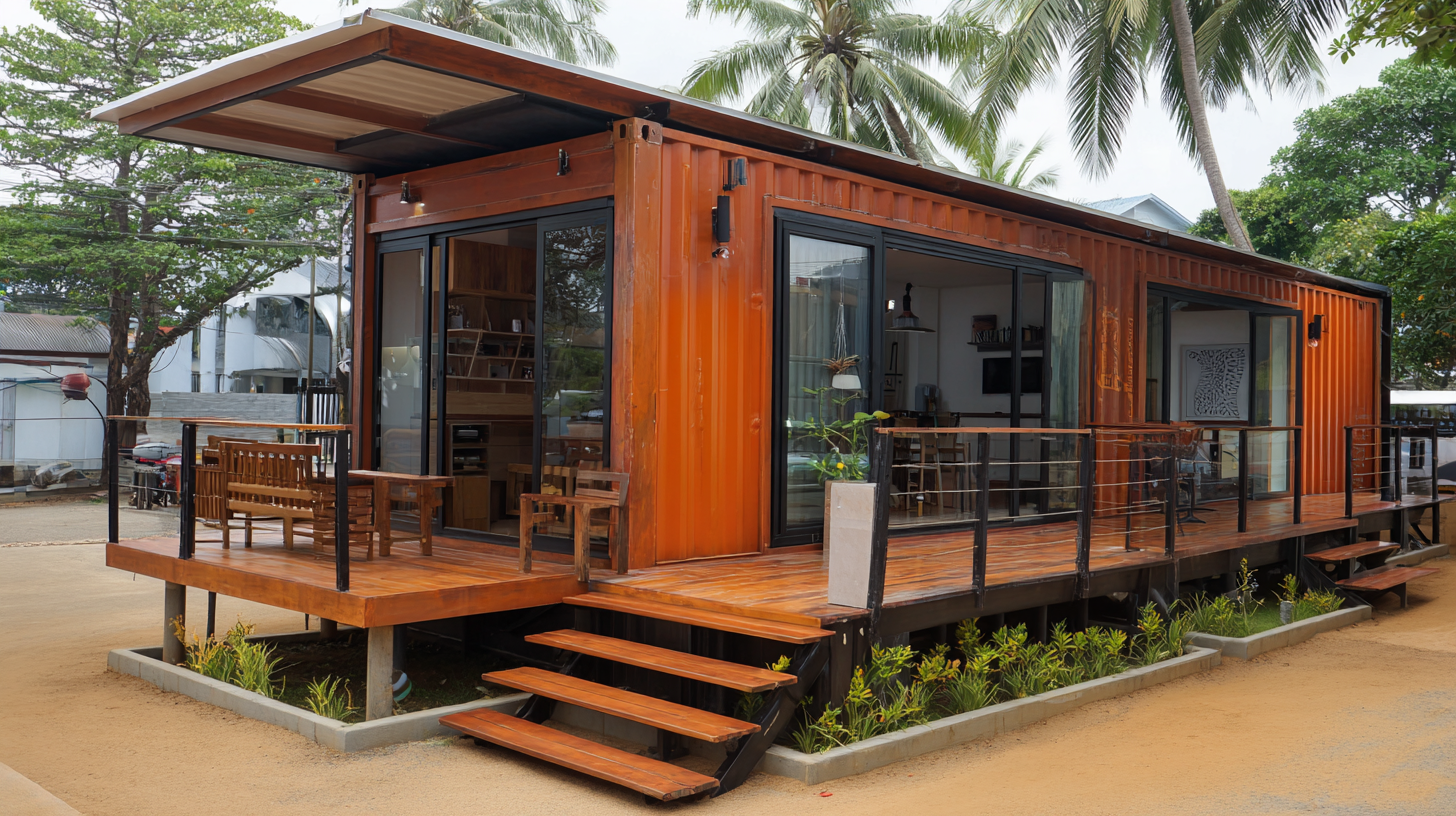
Creative Interior Design Tips for Maximizing Space in Your Container Home
Creative interior design really matters when it comes to making the most of space in a container van house—especially with the whole tiny living and minimalist vibe getting more popular these days. I’ve read some recent stuff that says a good kitchen layout can totally boost how functional the space feels. So, it’s pretty smart to go for open-concept setups that let you move around easily and stay organized without fuss. Making use of vertical space with shelves and cabinets is also a game-changer—it keeps your countertops clear and makes everything more accessible, even in smaller kitchens. These tricks not only help you save space but also make your home look way more stylish and put together.
And here’s a cool tip: smart storage solutions can really turn every awkward corner into useful space. Think about adding storage ottomans or under-bed drawers—stuff that helps you reclaim wasted areas in multifunctional rooms. When it comes to closets, designers say using vertical dividers or adjustable shelves can really help fit different kinds of stuff without making your closet look cluttered. Focusing on these clever ideas means you’ll end up with a container home that’s both super cute and super practical—perfect for relaxing in comfort, without sacrificing style or function.
Sustainable Living: Energy Efficiency Solutions for Container Van Houses
Building a container van house here in the Philippines
isn’t just about having a cool, unique place to live; it’s also a great chance to go green and embrace more sustainable living. One of the coolest parts? Using renewable energy like solar panels. With the endless sunlight we get here, you can seriously cut down your carbon footprint and still have enough power for your home—whether it’s powering appliances, cooling, or heating. Honestly, solar energy in this sunny climate is pretty much a no-brainer, and it helps you live a more self-sufficient lifestyle.
And if you want to go the extra mile, you should think about passive design tricks—stuff that naturally keeps your home comfortable without wasting energy. Things like careful window placement for better airflow, using insulated materials to block out heat, and designing overhangs to keep the sun's harsh rays at bay can make a big difference.
Oh, and collecting rainwater is also a smart move—set up a system to catch and store water for everyday use. When you mix these eco-friendly solutions, your container van house isn’t just stylish and cozy, but also a true example of sustainable living that fits perfectly with this tropical vibe.
Budgeting and Financing Your Container Van Home Project in the Philippines
Starting off on the journey to build your dream container van home here in the Philippines? One of the first things you’ll want to figure out is your budget and how to finance the project. It’s a good idea to start by setting a realistic budget that covers everything—think the cost of the container itself, site prep, utilities, and those interior touches to make it cozy. Do some homework on prices, checking out both second-hand and new containers, plus local construction costs, so you’ve got a solid plan to work with. And hey, don’t forget to set aside a little extra just in case surprises pop up—that’s pretty common with construction, after all.
When it comes to financing, you’ve got a few options. Using your personal savings is obviously the simplest route, but if you need a little extra help, loans from banks or specialty lenders who get unique housing projects might be worth looking into. Some banks even offer construction loans, which could fit your needs, so it pays to shop around. Oh, and if you’re into community living or co-housing, pooling resources with family or friends can make things easier financially—and it’s a great way to build a little camaraderie along the way. Bottom line? Having a clear, realistic financial plan isn’t just about making the build happen; it also sets you up for living comfortably in your awesome new container van home down the line.
Exploring the Future of Healthcare Infrastructure: Innovative Solutions in Emergency Hospital Containers and Modular Spaces
In recent years, the demand for flexible and efficient healthcare solutions has surged, particularly in emergency situations where traditional healthcare infrastructures may falter. The emergence of emergency hospital containers represents a groundbreaking innovation, showcasing a blend of resilience and adaptability. These modular spaces are designed to be rapidly deployed, ensuring that medical care is available even in the most challenging environments. With features such as wind resistance graded at 11, these containers can withstand wind speeds of up to 111.5 km/h, while also offering earthquake resistance rated at grade 7, making them ideal for disaster-stricken areas.
The construction of these emergency hospital containers emphasizes not only strength but also fire safety, classified as B2 grade fireproof. This ensures that medical professionals and patients alike can operate safely within these spaces. The design process is rooted in a professional approach, ensuring that every aspect of the container meets the highest standards of functionality and safety. Installation is streamlined, allowing healthcare providers to set up quickly and efficiently, minimizing downtime during critical moments. As we explore the future of healthcare infrastructure, these innovative solutions stand out as a key to addressing urgent medical needs in various scenarios.
FAQS
: Required permits typically include a building permit, occupancy permit, and possibly additional permits for utilities and environmental compliance.
Adhering to local regulations is essential to avoid legal issues and ensure a smooth construction process, as neglecting permits can lead to complications.
Local zoning laws can vary widely by location, impacting what is allowed in terms of building regulations and design, making it important to consult local authorities.
Effective kitchen layouts, utilizing vertical space with shelving, and incorporating smart storage solutions like storage ottomans can maximize space efficiency.
Consider using renewable energy sources like solar panels, implementing passive design principles, and integrating rainwater harvesting systems to enhance sustainability.
Renewable energy sources, particularly solar power, significantly reduce the carbon footprint and meet the electrical needs of a container home, promoting a self-sustaining lifestyle.
Strategically placed windows for natural ventilation, insulated materials to minimize heat gain, and designed overhangs to shield from direct sunlight can enhance thermal comfort.
Using under-bed drawers, vertical dividers in closets, and adjustable shelving can optimize storage while maintaining a clean and organized appearance.
Open-concept designs promote fluid movement and organization within the space, enhancing functionality, especially in smaller areas like kitchens.
Ensuring your container home aligns with local regulations and promotes sustainable living practices can help showcase the viability of this housing trend.
Conclusion
Thinking about building your dream container van home here in the Philippines? It’s honestly a pretty cool and unique way to live — combining practicality with sustainability in a way that really suits modern lifestyles. This all-in-one guide covers the essentials, like how to pick the right container design that fits your needs, where to find high-quality containers, and what permits and regulations you should keep in mind when building. Plus, there's a lot of creative ideas for making the most of your space inside and how to install energy-efficient features — perfect if you're aiming for a more eco-friendly way of living.
And don’t worry about the financial side of things — we’ve included some tips on budgeting and financing options that are spot-on for the Philippine market. If you’re partnering with experts like China Construction Integrated Building Co., Ltd., who are pros at prefab solutions, you’re in good hands. Starting your container van home here in this beautiful tropical paradise isn’t just a dream — it can be your reality, and it’s easier than you think!
Blog Tags:



